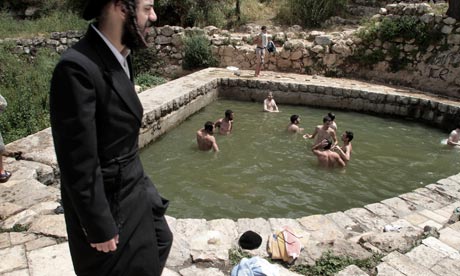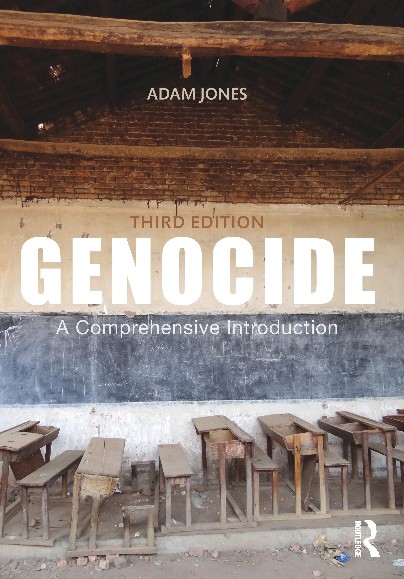 |
| "Ultra-orthodox Jewish teenagers swimming in the village spring in the ruins of Lifta." (Quique Kierszenbaum) |
By Harriet Sherwood
The Guardian, May 29, 2011
"In the soft golden light of a late spring evening, as yellow flowers are beginning to bloom on giant cacti, Yacoub Odeh climbs up through knee-high grass to the ruin that was his childhood home. For a man in his eighth decade, he is surprisingly nimble as he navigates ancient stones that litter the ground. But behind his light step is the weight of painful memories of a lost youth and a fading history. 'Here is my house,' he says, sitting on the remains of a stone wall in whose crevices wild flowers and saplings cling. 'Now only the corners remain. Here is the taboun [outdoor oven] where my mother used to bake bread. The smell!' With distant eyes, he describes an idyllic childhood in a place he calls paradise, where families helped one another and children played freely amid almond and fig trees and on the rocks around the village's natural spring. The place is Lifta, an Arab village on the north-western fringes of Jerusalem, for centuries a prosperous, bustling community built around agriculture, traditional embroidery, trade and mutual support. But since 1948, shortly before the state of Israel was declared, it has been deserted. The population, according to the Palestinian narrative of that momentous year, was expelled by advancing Jewish soldiers; the people abandoned their homes, say the Israeli history books. Lifta was one of hundreds of Arab villages taken over by the embryonic Jewish state. But it is the only one not to have been subsequently covered in the concrete and tarmac of Israeli towns and roads, or planted over with trees and shrubs to create forests, parks and picnic areas, or transformed into Israeli artists' colonies. Some argue that Israel set out to erase any vestige of Palestinian roots in the new country. Now, 63 years on, the ruins of Lifta are finally facing the threat of bulldozers and concrete mixers.
A long-term proposal to sell the state-owned land for the construction of luxury housing units and a boutique hotel on the site is awaiting the authorities' final approval. It has caused a furore. Opponents of the plan include those who believe Lifta should be preserved as a monument to history; those who want to retain its charming environs as a rambling spot; and those -- Odeh among them -- who insist that one day they will return and reclaim their homes. For many Palestinians, Lifta is a symbol of the Nakba, literally the 'catastrophe,' of 1948 in which 700,000 people were dispossessed. It embodies their longing for their land, and their bitterness at their continued refugee status. It is, wrote Palestinian author Ghada Karmi in a letter to the Los Angeles Times, 'a physical memory of injustice and survival.' The development plan was approved by the Jerusalem municipality five years ago, but earlier this year the Israel Lands Administration -- the state agency that took ownership of Lifta's land under the Israeli law governing property deemed to be abandoned -- began marketing the plot to private developers. A legal challenge stayed the tender process, but a decision is due any day on whether to proceed. The proposal is for 212 luxury housing units, expected to be advertised to wealthy expatriate Jews, a chic hotel and shops, and a museum. It suggests that some of the ruins be restored. But Lifta as a sanctuary and de facto heritage site will be lost. [...]"














No comments:
Post a Comment
Please be constructive in your comments. - AJ